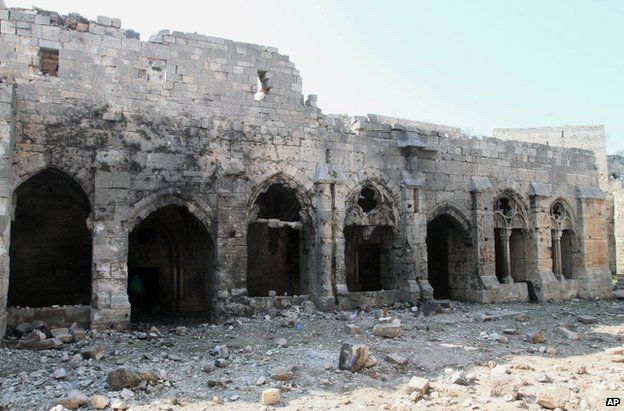On Friday the 22nd January we were delighted but apprehensive to welcome Dr. Emma Loosley, Associate Professor in Theology and Religion, back to our department to talk about destruction of monuments in the Middle East. This extremely current and distressing issue was sure to evoke some strong emotions from the audience.
Loosley began by explaining that there was a history of looting in pre-war Syria, both unlicensed excavation and looting from museums, but not the destruction that we see today. Three categories of destruction were highlighted – targeted/accidental damage in warfare, looting and deliberate acts of destruction. Accidental damage is to be expected when heavy fighting happens close to archaeological monuments. One example of this is Krak des Chevaliers, which is a medieval world heritage site used as a military base resulting in it being shelled. Looting at sites such as Apamea is generally happening due to desperation and starvation in the local population as they can be paid for the antiquities they uncover.
Deliberate destruction has understandably received a lot of attention in the media, particularly at Palmyra and Dayr Mar Elian. Loosley suggested that destruction Palmyra be seen as more subversive than initially it appeared, with archaeological reliefs potentially removed before the destruction of the temple to be traded for armaments. By pretending the site has been utterly destroyed the reliefs could be sold more easily, as people won’t look for the artefacts. Muslims are those who have suffered the most when it comes to destruction. There are huge psychological implications of this mass loss of culture, and Sunni graveyards have been amongst sites targeted, turning the local population against IS.
Loosley ended her talk by giving us an idea of what can be done in response to the destruction of archaeological monuments. Firstly she urged that sellers should not be engaged with – to not buy or authenticate archaeological items from unknown sources, and pressure the art market to self-regulate. Finally she said we must move forwards from recording and mapping destruction and start acting first by hiding objects and training Syrian archaeologists. We’d like to thank her for her incredibly thought provoking presentation.

